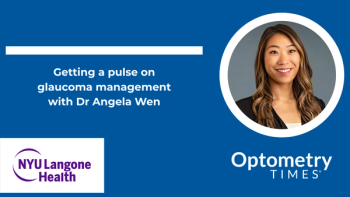
- April digital edition 2022
- Volume 14
- Issue 4
Case report: 16-year-old presents with asymptomatic glaucoma
Routine eye exam catches juvenile-onset open-angle glaucoma.
Every now and then, I am starkly reminded why we advocate for comprehensive, periodic eye examinations starting from infancy, although doubtless they occur more frequently than I give them credit for.
Case report
A few weeks ago, a mother and her 2 children came in as new patients. There was no known history of glaucoma in the family. The mother was having a difficult time seeing at night, which was alleviated with a low myopic prescription. Of note, her IOPs were normal and her optic nerves were healthy.
The younger child, a 12-year-old boy, had no complaints. His IOPs were also normal and his optic nerves healthy. He was very lowly hyperopic and I invited him back in a year for another comprehensive exam.
The other child, a 16-year-old boy, also had no complaints. His entering unaided visual acuities were 20/20 in the right and left eyes. Near visual acuity was also 20/20, and accommodative posture and binocular vision assessments were all unremarkable. His IOPs, by means of rebound tonometry, were 34 mm Hg in the right eye and 40 mm Hg in the left in the midafternoon.
I rechecked his IOPs by means of Goldmann applanation tonometry and got values of 33 mm Hg in the right eye and 40 mm Hg in the left. His pupils were briskly reactive with no afferent pupillary defect, and extraocular muscle function and visual field function by means of confrontational field testing were intact.
Assessment
Careful assessment of his anterior chamber showed wide open angles to grade 4 by means of Van Herick assessment with normal anterior segment structures and deep and quiet anterior chambers. I dilated his eyes, and his left optic nerve was obviously glaucomatous with a thin and attenuated retinal nerve fiber layer. His right optic nerve did not appear as pathological as the left. I took fundus photos of both posterior poles (Figure 1).
Even in 2 dimensions, the left eye’s optic nerve damage was overt. I explained the findings to the patient and his mother and the need for treatment to lower his IOPs and prevent visual difficulties in the future. I explained that genetics can cause it, some medications can cause it, and sometimes it just happens without a clear explanation.
The mother stated that he had used a nasal spray with a steroid in it, but that some time had passed since he had used it. I referred the patient to a glaucoma specialist at a local teaching hospital. At the time I wrote this column, the patient had been seen and been prescribed multiple glaucoma medications.
Juvenile-onset open-angle glaucoma (JOAG) is a member of the open-angle glaucoma family.1 The term JOAG is reserved for primary open-angle glaucoma (POAG) diagnosed prior to age 40.1 The progression rate of JOAG has been reported to be similar to that of POAG.1 But the lurking variable is the relatively young age of the patient, so there tends to be more time for disease progression before death.
Conclusion
I am very thankful that this patient’s mother brought him in for an eye examination, especially with a lack of symptoms indicating a need for one. She wanted to know whether her son was going to go blind from his condition. I simply replied, “as long as he has adequate treatment, no.”
I wonder how many individuals are walking around out there with very high IOPs and no clue of it. I wonder how many with narrow angles think their headaches are just migraines.There is no better time than the present to talk about glaucoma as the silent blinder just as we talk about hypertension as the silent killer.
Reference
1. Selvan H, Gupta S, Wiggs JL, Gupta V. Juvenile-onset open-angle glaucoma – a clinical and genetic update. Surv Ophthalmol. Published online September 15, 2021. doi:10.1016/j.survophthal.2021.09.001
Articles in this issue
over 3 years ago
When pharmacies threaten treatment plans, look elsewhereover 3 years ago
Dry eye appears in an unlikely subjectover 3 years ago
How $420 co-op dollars netted $19,000 in revenueover 3 years ago
3 practice hacks for success with patientsover 3 years ago
Case report: the “other” AMDover 3 years ago
The ideal LASIK candidateover 3 years ago
Adopting new technology without sacrificing practice spaceover 3 years ago
Contact lens disinfection methods still matterNewsletter
Want more insights like this? Subscribe to Optometry Times and get clinical pearls and practice tips delivered straight to your inbox.













































.png)


